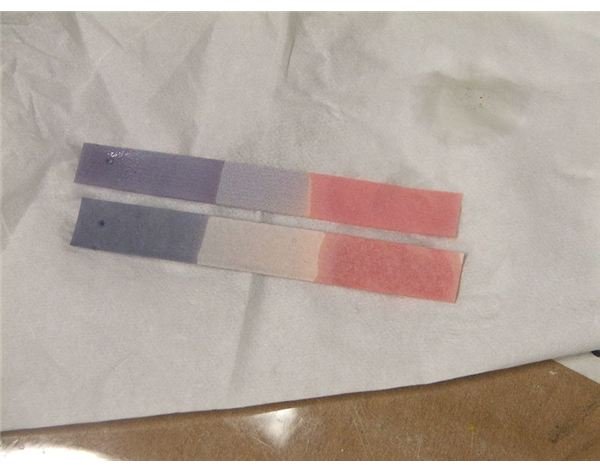An Easy Way to Test Your Body's pH Levels at Home
Certain patients are required or ordered to keep an eye on their body’s pH levels by their physician. A pH test can identify the acidity or alkalinity levels in a person’sbody. It is important to test two to three times a day to achieve an accurate reading. A variety of factors can affect pH levels. The types of food that are ingested, vomiting, diarrhea, lung function, endocrine function, kidney function or a urinary tract infection can affect the outcome of a pH test.
A pH of 7 is neutral. The lower the number on the reading, the higher the acidic levels in the body. A normal pH level reads between 7.35 and 7.45. There is an easy and convenient way to test pH at home.
Litmus Paper
Using litmus paper can easily determine the body’s pH level. The paper is treated with special indicators, 10 to 15 different dyes that are obtained from lichens (Roccella tinctoria). When a liquid comes in contact with the paper, the paper changes color. With some brands, the color will be yellow if acidic, blue if alkaline and green if neutral.
Urine or saliva can be used to achieve results. To use the litmus paper, place the saliva or urine into a wide-mouth container. Dip one end of the strip into the container. The results will appear in seconds. The litmus paper will give an accurate result. Once the paper is dry, the results become inaccurate.
The Importance of Measuring pH Levels
Degenerative diseases cause the body to have high acidic levels. Cancer, heart disease, arthritis, osteoporosis, kidney or gallstones, and even tooth decay are a few diseases that cause excess amounts of acidity in the body. Monitoring pH levels can notify a person of a change in their body. The body has a constant pH level of 7.4 in the body (this is called homeostatic mechanism). The homeostatic mechanism deposits and withdraws acid and alkaline minerals from bones, soft tissues, body fluids and saliva. This allows the pH of other tissues to fluctuate greatly.
Keeping the proper pH balance can help you face most health conditions. When a person does not eat properly, pH levels tend to lean to the acidic side. Most Americans have a pH balance in the range of 6.2 and 6.4. You can help keep your pH level neutral when you eat alkaline foods: fresh fruits and vegetables, almonds and yogurt. Try to avoid/limit processed, sugary and dairy foods. These types of foods have a high acidity level. Disease producing organisms thrive in this type of environment.
References
- Chi Choices: Factors in Acid-Alkaline Balance: http://chichoices.com/ph_2.php
- Real Water Health: Body pH - How to Measure it and What it Means: http://www.realwaterhealth.com/2008/10/body-ph-how-to-measure-it-and-what-it-means/
- Image: WikiMedia Commons/chemicalinterest
- Alkaline Diet: http://www.webmd.com/diet/features/alkaline-diets-what-to-know
